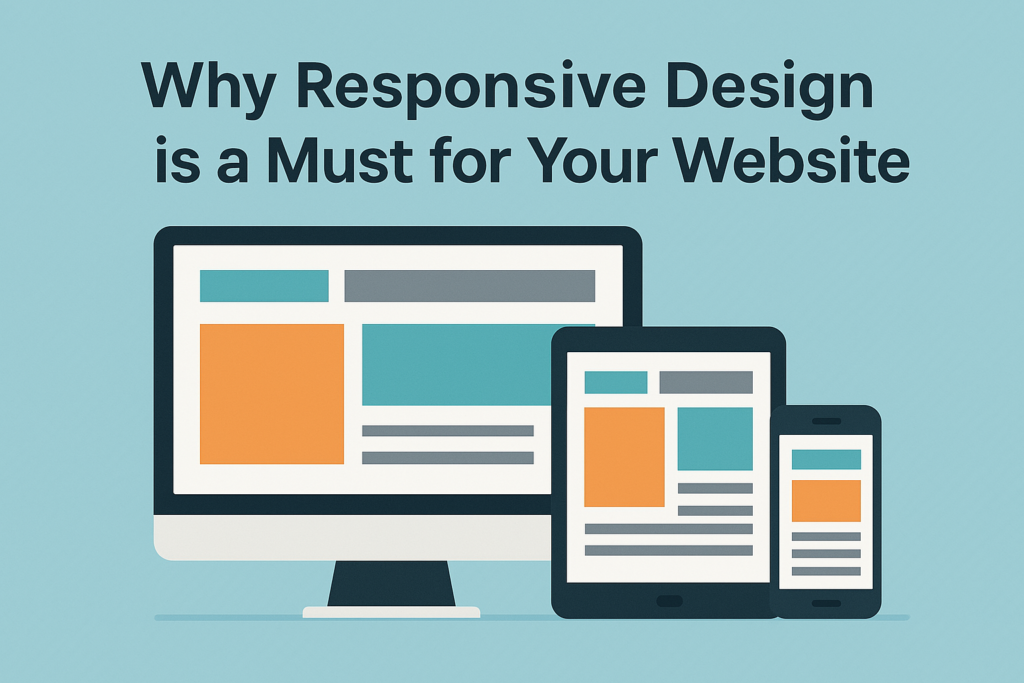Introduction
In today’s digital age, where users access websites from a variety of devices—smartphones, tablets, laptops, and desktops—ensuring a seamless user experience across all screen sizes is more important than ever. Responsive design has transitioned from being a mere trend to an absolute necessity for businesses, bloggers, and developers alike. A website that adapts to different screen resolutions enhances usability, improves SEO, and ultimately drives higher engagement and conversions.
In this blog post, we’ll explore why responsive design is a must-have for your website, backed by industry insights and practical benefits.
What Is Responsive Design?
Responsive design is an approach to web development that enables a website to adjust dynamically to different screen sizes and resolutions. Rather than having separate desktop and mobile versions, a responsive website utilizes flexible layouts, images, and CSS media queries to create a consistent experience across all devices.
The core principles of responsive design include:
- Fluid Grids: Using relative units like percentages rather than fixed pixels for layout components.
- Flexible Images and Media: Ensuring images and other media scale proportionally.
- Media Queries: CSS techniques that adapt styling based on screen size.
- Mobile-First Approach: Designing for mobile screens first and progressively enhancing for larger screens.
Why Responsive Design Matters
1. Enhancing User Experience (UX)
A seamless user experience is the foundation of a successful website. Visitors expect easy navigation, fast load times, and readability without excessive zooming or horizontal scrolling. Responsive design ensures that users have a frictionless experience, leading to better engagement and lower bounce rates.
2. Improves SEO and Google Rankings
Google prioritizes mobile-friendly websites in its search results. With Google’s mobile-first indexing, websites that are optimized for smartphones and tablets rank higher on search engine results pages (SERPs). A responsive design eliminates duplicate content issues that arise from separate mobile and desktop sites, strengthening your SEO performance.
3. Cost and Time Efficiency
Maintaining separate websites for mobile and desktop is costly and time-consuming. A responsive website consolidates efforts into a single design, reducing development, maintenance, and content management workload. This efficiency benefits businesses aiming to optimize resources while delivering a seamless digital experience.
4. Increased Mobile Traffic
Mobile traffic has surpassed desktop usage globally. In 2025, over 75% of internet users access websites primarily through mobile devices. If your site isn’t mobile-friendly, you risk losing potential customers. A responsive website ensures accessibility to a wider audience, maximizing opportunities for conversions and engagement.
5. Better Conversion Rates
A responsive site encourages users to stay longer and interact with your content or services. Whether it’s signing up for a newsletter, purchasing a product, or filling out a contact form, an intuitive experience translates into higher conversion rates. Poor usability, on the other hand, pushes users away.
6. Adaptability to Future Devices
Technology is evolving rapidly, with new devices emerging every year. Responsive design ensures your website is future-proof, adapting to varying screen sizes without requiring extensive redesigns.
7. Social Media Sharing Compatibility
Social media platforms drive significant traffic to websites. When users share your content, the link should open seamlessly across devices. A responsive design ensures your website maintains its aesthetic and functional appeal when accessed through social media referrals.
How to Implement Responsive Design
1. Adopt a Mobile-First Approach
Designing for mobile first ensures that the smallest screens get priority, making it easier to scale up to larger resolutions.
2. Use Responsive Frameworks
Popular CSS frameworks like Bootstrap and Foundation provide built-in responsive components, simplifying implementation.
3. Optimize Images and Media
Ensure images scale properly and use modern formats like WebP for faster load times.
4. Apply CSS Media Queries
Utilize media queries to adjust styling based on screen size.
5. Test Across Devices
Regularly test your website on multiple screen sizes using tools like Google’s Mobile-Friendly Test, BrowserStack, and real devices.
Conclusion
Responsive design is no longer optional—it’s a fundamental aspect of modern web development. From improving user experience and boosting SEO rankings to driving conversions and future-proofing your website, the benefits are undeniable. Prioritizing responsive design ensures that your website remains competitive and accessible in an increasingly mobile-driven world.
If you haven’t embraced responsive design yet, now is the time to make the shift!
Let me know if you’d like any tweaks or additions!



